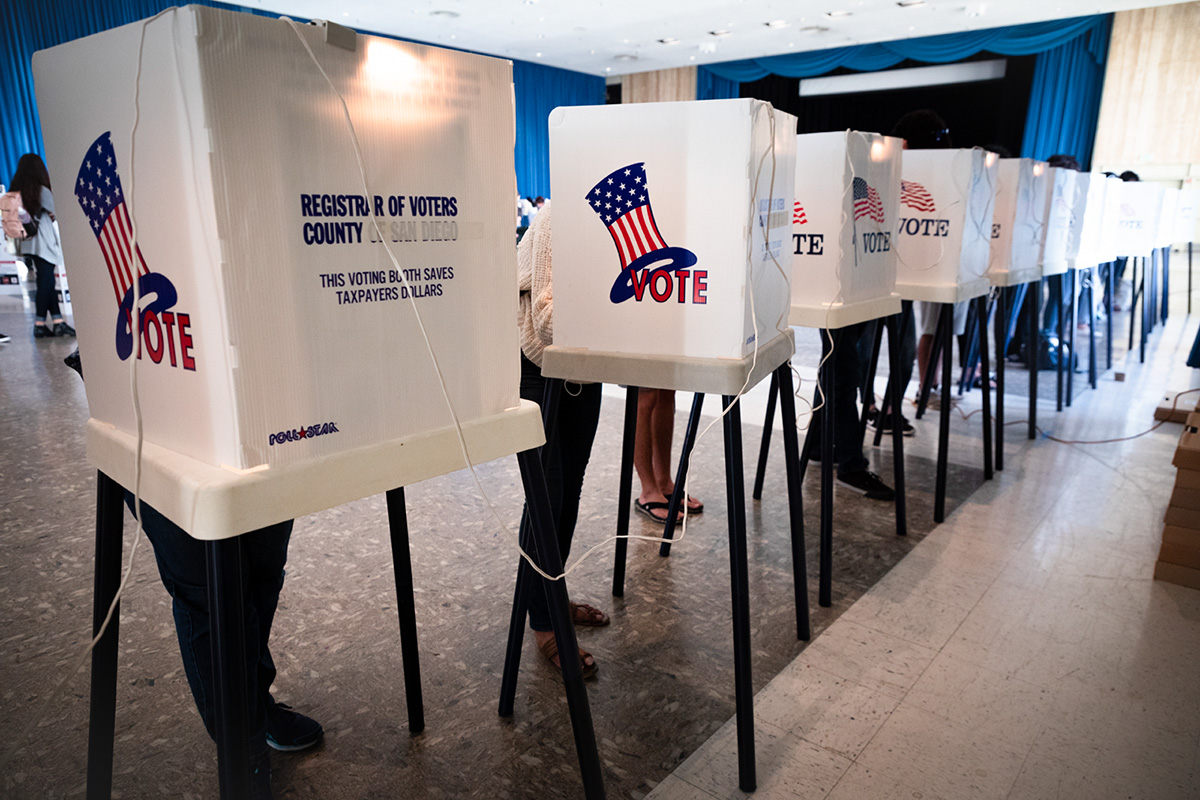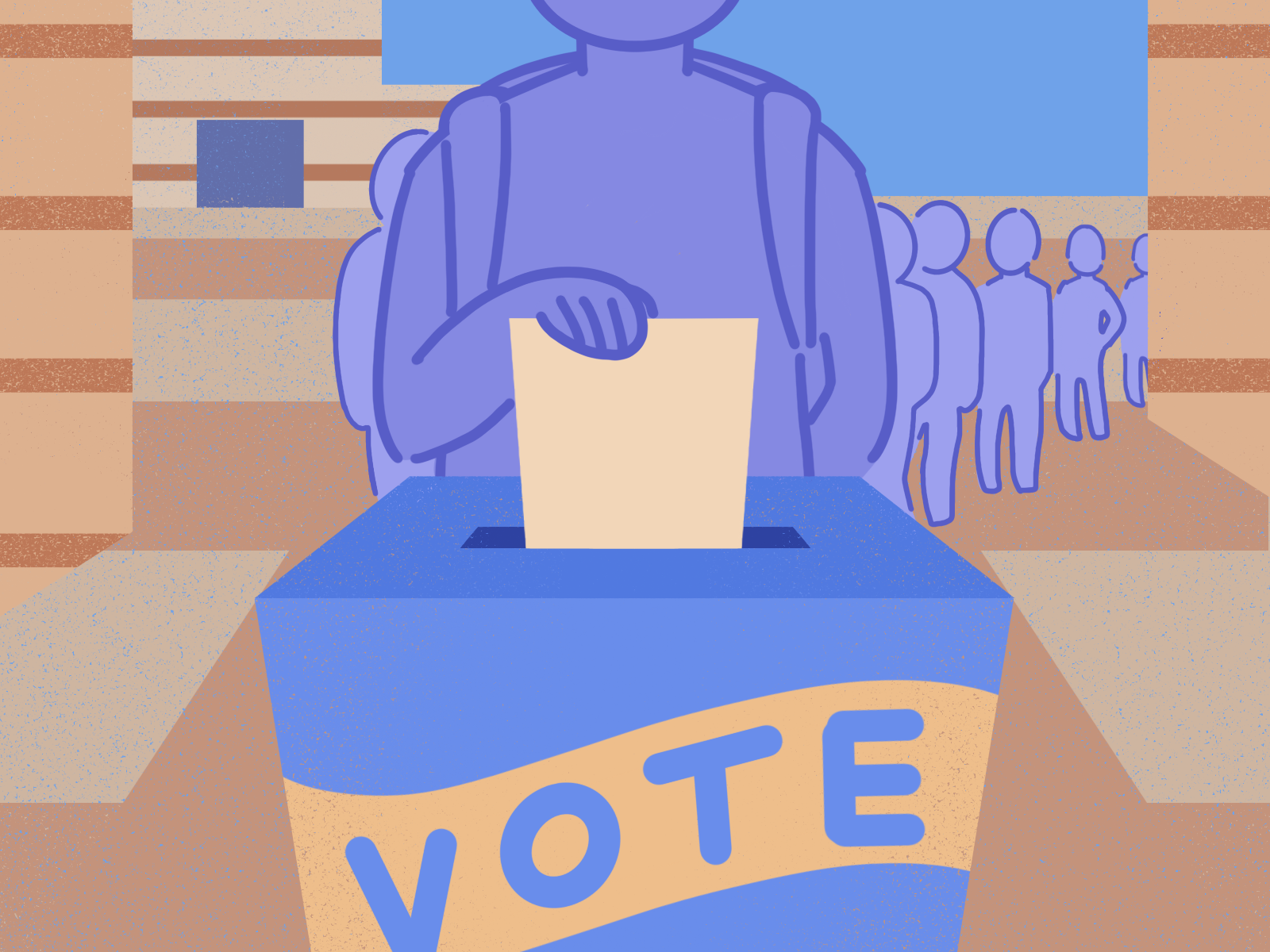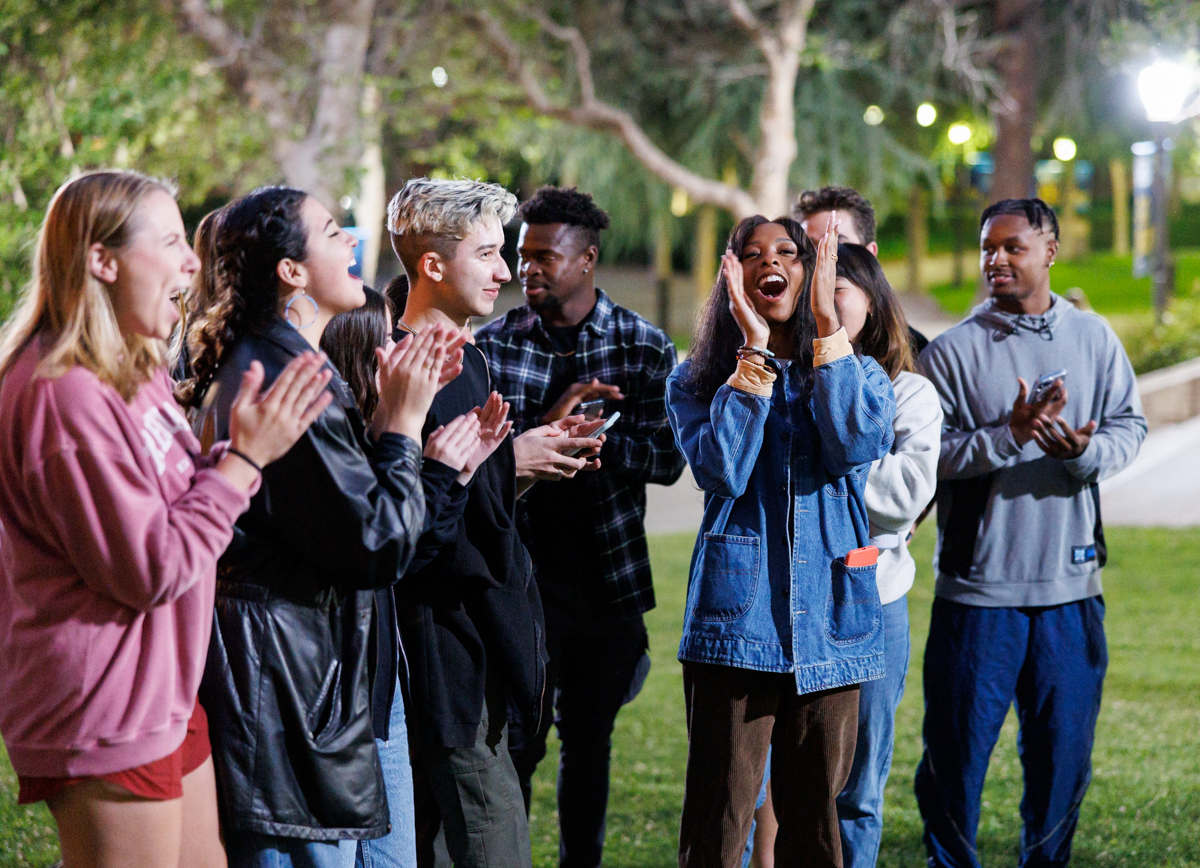Why is youth voter turnout so low, and how can it be improved?

(Alicia Caldera/Daily Bruin)
By Anna Gu
March 27, 2024 11:17 p.m.
This post was updated March 31 at 10:13 p.m.
California held its primary elections March 5, officially kick-starting the voting season in the state until the general election in November.
Despite a competitive Senate race to succeed replace Sen. Dianne Feinstein’s seat, data from California’s Secretary of State as of 5:52 p.m. Wednesday revealed that only 34.9% of eligible voters in the state cast a ballot during this year’s primaries, a near-record low in turnout.
National Election Pool exit polls of the California Republican primary showed that as of March 18, voters aged 18 to 29 cast only 7% of the votes in the state, according to Tufts University’s Center for Information & Research on Civic Learning and Engagement. Several factors may contribute to low youth voter turnout, such as accessibility challenges and insufficient education, which can impact young individuals’ ability to recognize the power of the ballot, according to students and voting advocates.
Aashi Jhawer is a first-year business economics and human biology and society student, as well as the co-executive director of California’s branch of Voters of Tomorrow, a political organization that focuses on Generation Z. Jhawer said the low voter turnout among young voters may be because this group often experiences many simultaneous life changes that can create logistical issues with voting.
“Eighteen is a very tumultuous age – a lot is happening in life,” Jhawer said. “A lot of people are moving out of their hometowns, but then they’re still registered to vote in their hometown.”
Jhawer said she believes that low youth voter turnout may also be influenced by the younger generation’s lack of confidence in their vote to change public policy.
“Youth voter turnout is highly influenced by how much we as youth think that our voice is actually going to matter in an election,” Jhawer said. “Unfortunately, in these past few elections, we’ve seen that youth don’t really necessarily feel like their voice is actually going to have an impact or have an influence in the way that our government is operated.”
Francesco Arreaga, a former 2024 Democratic candidate for California’s 30th Congressional District and UCLA Chinese and political science alumnus, said a disinterest toward or taboo against political dialogue appears to be a prevalent issue among Generation Z, based on his experience reaching out to voters in his district.
Student-led groups at UCLA are finding solutions to combat youth political apathy. Alvina Shea and Jiana Javier-Ramos of BruinsVote, UCLA’s nonpartisan voter registration and education group, said in an emailed statement that fostering conversations about politics to reflect individual values is effective in engaging young voters.
“There’s no doubt that there’s a widespread myth that people’s individual votes don’t matter, especially in places where the population sways largely one way politically,” said Shea, a third-year public affairs student, in the statement. “It’s also hard to make students care about other things that they might not see the direct impact of, especially because we are all so busy and preoccupied.”
According to The Civics Center, a nonpartisan organization focused on student voter registration, underlying issues such as lack of civic education, voter registration programs and up-to-date data on youth voter files contribute to young voters not registering to vote and consequently not showing up to the polls. Political candidates may also overlook young individuals who are unregistered to vote and fail to engage with them, which can leave young voters feeling neglected and unmotivated to participate in elections. While young people may decide not to vote voluntarily, these systemic factors contribute to voter suppression among young people, according to the same source.
Some legislation exists to address this issue, such as California’s High School Voter Education Weeks, which were established in 2016. Though this provision designates two weeks in the academic calendar to educate Californian students on voting and civic engagement, the program has seen significant issues with implementation and enforcement, Jhawer said.
In 2020, a study done by CIRCLE showed that young people who reported receiving encouragement and education on voting in high school exhibited a higher likelihood of turning out to the polls. Additionally, these educated young individuals demonstrated more knowledge about the democratic process and invested more energy into the 2020 election than their peers.
Shea said she believes that low voter turnout among students can be attributed to a widespread deficiency in understanding how to register to vote, locating voting centers and navigating complications with address registrations.
“The lack of voter turnout on college campuses can partially be attributed to the fact that many students don’t know the logistics of voting – how to register, where they can vote, what they do if they are registered in a different place, and more,” Shea said in the statement.
According to a CIRCLE study conducted before the 2020 presidential election, 36% of respondents ages 18-21 said that they did not know whether their state offered online voter registration. Additionally, 27% of respondents ages 18-21 said they felt uncertain about where to access more information on mail-in voting.
Several locations exist for Bruins to vote on or around campus. This primary, UCLA opened the Hammer Museum, Tom Bradley International Hall and Ackerman Union to students and all registered voters within Los Angeles County as voting centers for them to cast their ballots.
“It can be difficult to find a place to vote in person (if that’s what an individual chooses to do) so I think it is important for colleges to work on having as many vote centers around the area as possible,” Javier-Ramos, who is also a fourth-year political science student, said in the statement.
Despite UCLA’s efforts to increase opportunities for students to vote, some students and alumni are asking the school to do more. For example, Arreaga said UCLA should organize and host candidate forums. He added that even for candidates who do not necessarily represent the Westwood area, hosting a forum at UCLA would be a fantastic opportunity for students to see what their potential legislators are proposing.
On the other hand, BruinsVote aims to expand civic education by spreading voter registration information through social media and on Bruin Walk and by working with other student organizations and elected officials from the California State Legislature, Shea said in the statement.
Voters of Tomorrow similarly focuses on outreach to young Gen Z voters, as the organization contacted over 8 million young voters this past midterm season, Jhawer said. The organization specifically focuses on reaching young voters through social media and other online mediums, recognizing that these platforms are popular among young people, Jhawer added.
Ultimately, civically engaging young people allows individuals to recognize their ability to make tangible change both within LA and the entire country, Javier-Ramos said in the statement.
As a young politician, Arreaga said he recognizes the importance of the power of young people in the government.
“We really need to be involved in politics because … if we don’t get involved, then we’re letting other people make those decisions for us, and sometimes they may not be making the best decisions that are in our interest,” Arreaga said.
The decisions made by governments today have a profound impact on the future, and Arreaga said he wants young people to recognize their power to create change going forward.
“Bruins, make your voices heard. Those true Bruin values that we live by – we need that across America. And the way we do that is by voting,” Arreaga said. “Our votes can change the trajectory of our country, … and with that power comes great responsibility.”






